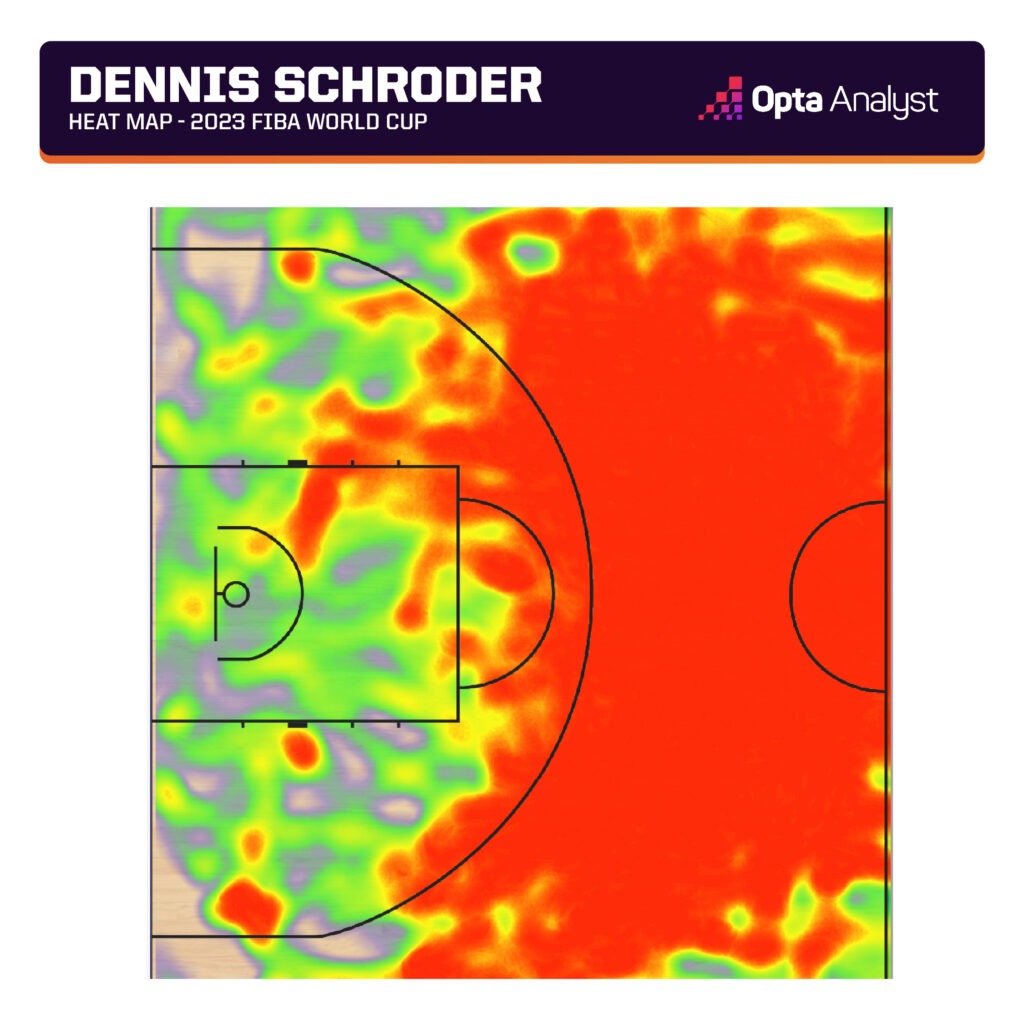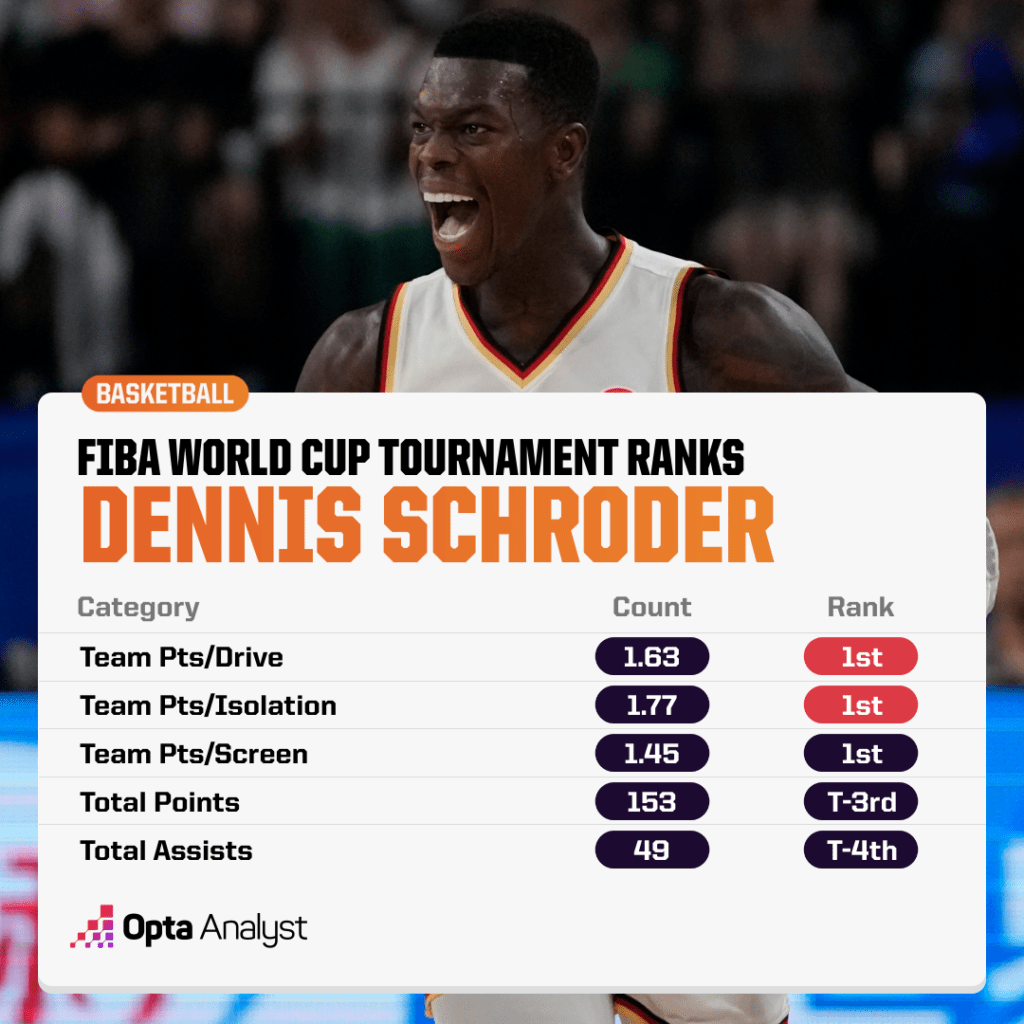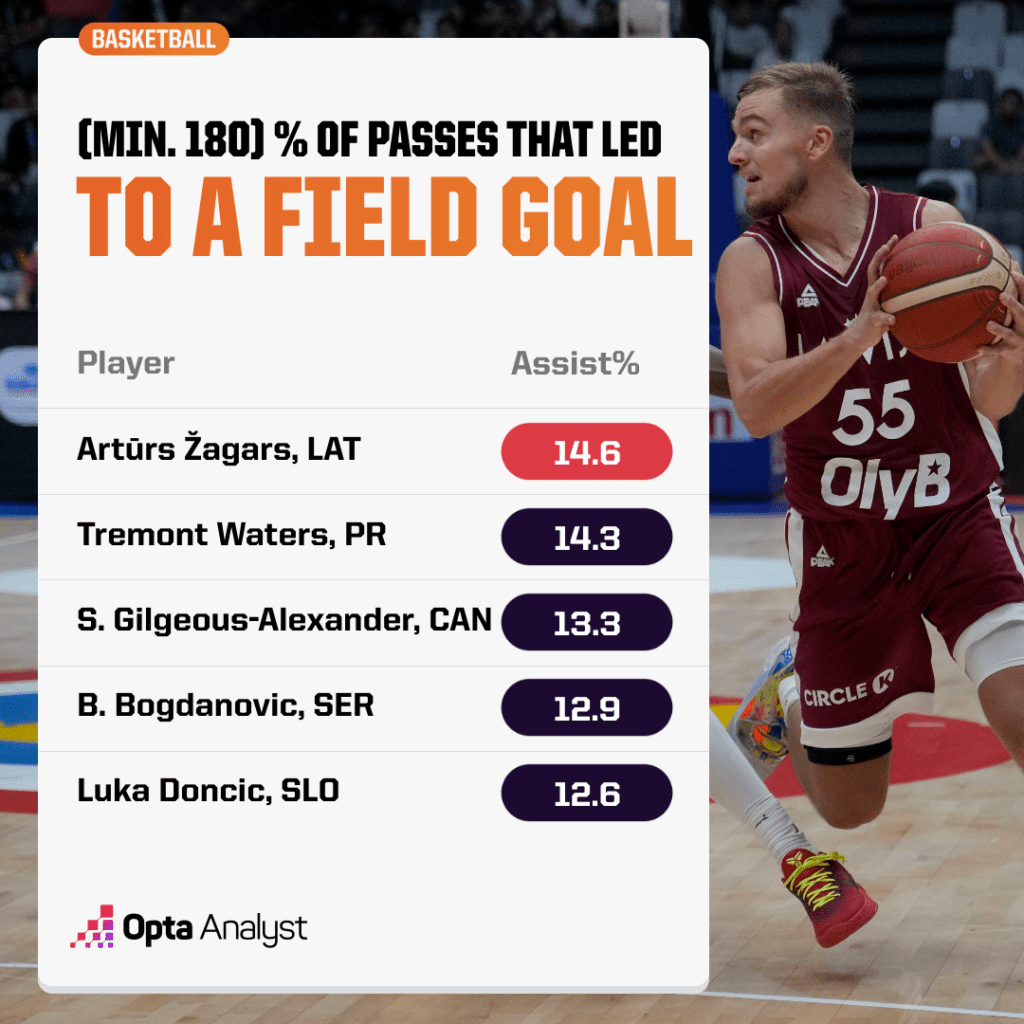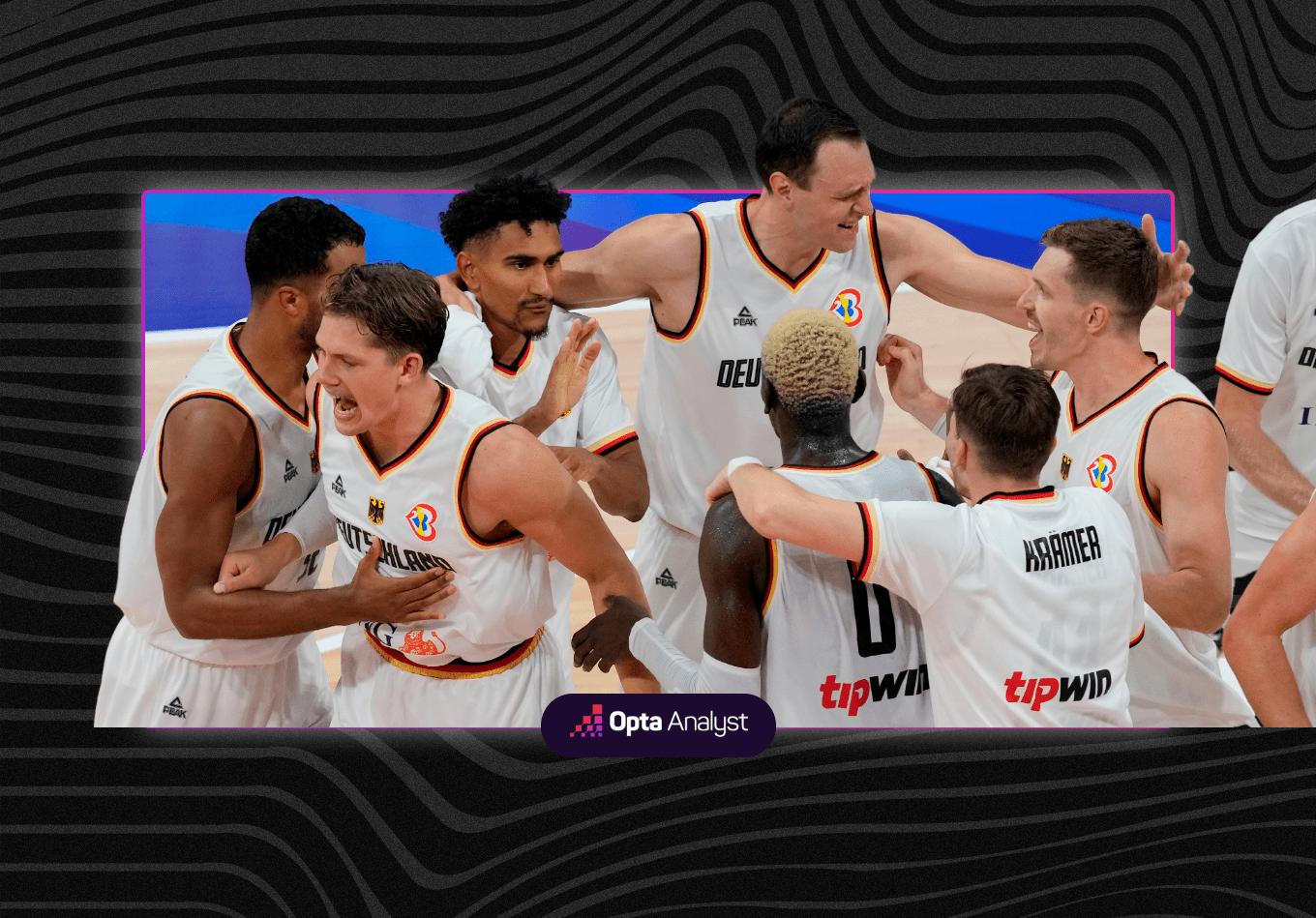The basketball world has a new champion.
Germany earned the right to be called “world champions” over the next four years after winning the FIBA World Cup 2023. But what are the stats telling us about that tournament?
Let’s dive into some advanced data collected during the competition by our AutoStats tracking tool. And who better to start with than the MVP of the FIBA World Cup 2023: Dennis Schroder.
Schroder, who plays for the Toronto Raptors in the NBA, stepped up with 28 points on 9-of-17 shooting in Germany’s 83-77 victory over Serbia in the gold medal game of the 2023 FIBA World Cup last weekend.
For the tournament, he averaged 19.1 points, 6.1 assists and 1.4 steals and joined Canada’s Shai Gilgeous-Alexander, USA’s Anthony Edwards, Serbia’s Bogdan Bogdanovic and Slovenia’s Luka Doncic on the all-tournament team.

Already known as a skillful player, the German guard starred not only individually but also in terms of his ability to make his teammates better.
Germany had the highest rate of team points in possessions where Schroder drove to the basket (1.63 team points per drive/minimum 25 drives), in possessions where Schroder went into an isolation play (1.77 points per iso/min. 15 isos) and in possessions where he received a screen as the ball handler (1.45 points per screen/min. 65 on-ball screens).

USA DISAPPOINTMENT
Team USA, which failed to get a medal for the second FIBA World Cup in a row, was considered a fast-paced team that preferred to get up and down in transition more than play a halfcourt game.
As a result, the USA averaged fewer passes per game than any other team (114.1). However, they had the third-highest ratio in both passes leading to a shot (19.7%) and passes leading to a basket (11%).
It is not surprising then that the Americans had 15.52 seconds remaining on their shot clock on average as they put the ball up faster than any other team in the competition.
The Upstarts
Undoubtedly the biggest surprise of the FIBA World Cup 2023 was Latvia, which ended up in fifth place. It’s the highest ranking for a team in its debut since 1994.
Latvia played a team game built on passing, and its determination quickly made its the crowd favorite in Manila. The Latvians saw 21% of their passes leading to a shot and 11.2% of their passes becoming an assist, the highest ratios of any team in the competition.
Individually, among the players with 180 or more passes, Artūrs Žagars had the highest ratio of assists per pass (14.6%). In the fifth-place game in which he broke the record for most assists in a FIBA World Cup game with 17 against Lithuania, he made an assist on 28.3% of his passes.
That’s the highest ratio in a game for a player with 20+ passes attempted.

Luka Mania
Obviously, all eyes were on NBA’s superstar Luka Doncic throughout the tournament. The Slovenian didn’t disappoint, averaging 27.0 points. That’s the fourth-highest mark for a player taking part in his first FIBA World Cup (after Shin Dong-pa at 32.6 in 1970, Nikos Galis with 33.7 in 1986 and Lee Chung-hee at 27.8 in 1986).
Because he was a major threat for all defenses, Doncic became the most targeted man in the tournament. Among the players with 20+ jump shots attempted, he had the highest rate of contested jumpers (92.5%). He made 31.3% of them, which was a little under the tournament average (34.6%).
However, even if Doncic made only a pass on 51.0% of his touches, the attention he attracted created open looks for his teammates. As a result, 29.7% of Doncic’s passes led to shots – the highest ratio among the players with 100+ passes.
